Michael Yell on Developing a Climate of Engagement
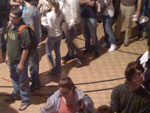



As teachers of history, we know that there are the curricular realities of textbooks, common assessments, district outcomes, and state standards to meet. But as teachers of history, we can regularly experience the motivating effects of having students think historically, wrestle with primary sources, and interact while they explore events, issues, ideas, and people of the past. We can do this while still meeting those curriculum targets that, at times, make it seem as though we must take our students on the deadly content coverage march.
I teach 7th-grade world history at the Hudson Middle School in Hudson, WI, and have taught every social science discipline, world history, American history, and state history in every secondary grade over a career of (so far) 37 years. As a classroom teacher I have found that in order to meet those curricular timelines and standards while engaging students in the study of history it is important to:
- develop a climate of engagement, interaction, and activity; and
- develop a repertoire of engaging thoughtful teaching strategies that will engage students in the study of history.
How can we as elementary and secondary teachers set a climate for exploration? How can we engage our students in historical thinking while meeting the expectations for curriculum coverage that we must? In this blog, I will write about creating that climate and those teaching strategies that I have found are unsurpassed in having students engaged in the study of history.
Many years ago, my family was sitting around the dinner table after the first day of school. We were talking about that first day when I asked my youngest, who was just entering in middle school, what he did in his class. His reply was we did the first thing we always do on the first day of school: we talked about rules. The two older children, one then in middle school and one in high school, chimed in that in addition to rules, we got to listen to course descriptions, just like every first day. That was an "ah ha" moment for me. What they, and probably most students, experience on the first day is basically a matter of routine and it is not setting a tone for engagement.
I love history and want to engage my students in its exploration. Setting the climate for this begins day one. Although there are certainly many ways to initiate your students into a climate of engagement and discovery, I would like to share mine which, with continual tweaks, I have been using ever since that dinner table conversation about 10 years ago.
When the students come into my room on the first day of school, they find desks formed into groups of four. They seat themselves, and as soon as the bell rings, I give them a challenge: students are to make a class timeline by standing along the walls of the room in order of their birth. The rules are that they cannot talk and they cannot write.
 Of course, they realize very quickly that the only way to do this is to use sign language—so many fingers for the month and then the day once they have found others born in the same month. After a few minutes of positioning and repositioning, from the first in line to the last, students announce their birthdays.
Of course, they realize very quickly that the only way to do this is to use sign language—so many fingers for the month and then the day once they have found others born in the same month. After a few minutes of positioning and repositioning, from the first in line to the last, students announce their birthdays.
 From that point, students are formed into groups of four and we talk briefly about the class. I start by asking them about their attitudes toward history and then give them my three guarantees. Regarding their attitudes I always seem to find that roughly a quarter of my students like history, another quarter dislike history, and the rest are ambivalent. It is then time for my three guarantees:
From that point, students are formed into groups of four and we talk briefly about the class. I start by asking them about their attitudes toward history and then give them my three guarantees. Regarding their attitudes I always seem to find that roughly a quarter of my students like history, another quarter dislike history, and the rest are ambivalent. It is then time for my three guarantees:
- this year we will explore a lot of history (I emphasize the word explore);
- this year you will enjoy learning history; and
- this year you will never, never do a worksheet.
We then spend the remainder of the period playing a team-building game called Whatzits.
The goal on this first day is not to set up the rules for the class, to give my students a syllabus, or even to begin engaging them in historical thinking (that will come). My goal is that when students leave the class, they will have a sense that this history class is going to be different from what they may be accustomed to. I use the birthday line-up, my guarantees, and a team-building exercise to set the tone for my classes. As fellow teachers of history, you may find other methods, but I strongly recommend you get students up and moving, and engage them in activities that will set those expectations of engagement.
What is the next step that must be made in fulfilling those expectations? Simple; the next step is to hit ’em with your best shot. Immediately.
To carry through with a tone and climate of engagement, it is necessary to use engaging and thoughtful teaching strategies in your teaching immediately. My best shot, i.e. the strategy that I have found most motivates my students and excites them about the upcoming unit, is a strategy called Discrepant Event Inquiry.
Imagine that students have just come into your American history class. The bell rings, and you tell your students that they are going to solve a mystery. The first thing they must figure out is what has happened in this story:
A young boy named John lived on a farm in a beautiful, mountainous, wooded area in Eastern Tennessee in 1837. His family planted corn and raised animals for meat, milk, and eggs. John had four brothers and three sisters. The family appeared happy and prosperous. In 1839 the family moved to a treeless, dry, flat prairie. During the journey, two of John’s brothers and one of his sisters died. When they arrived at their new home, the family could not grow enough to feed themselves. John’s father became a member of the legislature and his mother helped publish the local newspaper. John missed his brothers and sister, and his beautiful home in the mountains.
 When the short tale is complete you say to your students: what you must figure out is why John’s family would leave their beautiful farm for a difficult life in this flat dry prairie.
When the short tale is complete you say to your students: what you must figure out is why John’s family would leave their beautiful farm for a difficult life in this flat dry prairie.
A timer is set and immediately students begin to question you. But these are all a particular type of questions—questions posed to you must be answerable with only a yes or a no. No open-ended questions allowed—students must figure this story out on their own.
The questions and answers begin:
- Did the family know where they were going?
- Yes.
- Did they want to leave Tennessee?
- No.
- Why did they leave?
- I can’t answer that—remember, only yes or no questions.
- Did they have to leave?
- Yes.
Questions build upon questions and answers build upon answers as students probe and analyze the problem and develop hypotheses. After a few minutes, the timer is paused and students briefly discuss what they have learned and what they still must discover. Then the timer starts again, as do the questions, until time runs out (I give students five minutes) or a student has developed the correct hypotheses.
I have learned in using discrepant event inquiries that the motivational qualities of this strategy are just as strong, perhaps stronger, if a class does not figure it out. If the time runs out and they have not solved the mystery, they are ready to move into the inquiry more deeply and learn about it. If they do figure it out, they are happy and ready to move on to further inquiry into the subject.
There are four steps in conducting a Discrepant Event Inquiry:
- A puzzling story or statement is told to students as well as a statement of what they must figure out in order to solve it.
- Students analyze the puzzle by asking the teacher questions that can be answered with a "yes" or a "no."
- The teacher pauses during the inquiry in order to give students the opportunity to engage in small-group discussion to enrich their thinking and help them form hypotheses.
- The inquiry is followed with the development of questions that students wish to answer during the unit/lesson.
Developing the puzzling story or statement requires a bit of imagination, but anything that can be stated in a puzzling way or stories that can be told about the subject leaving important pieces of information out are ripe for the inquiry.
By the way, John and his family were Cherokees forced from their homes in the Trail of Tears. Students are now eager to make further inquiries into this tragic period in American history. Two exemplary strategies that the history teacher can use to further engage them in their inquiry are Response Groups and Mystery, which I will examine in future blog entries.
The discrepant event inquiry on the Trail of Tears is adapted from William C. and Jean K. Bruce, Mindtronics, Home Tree Media, 2009.
For a complete explanation of strategies for developing Discrepent Event Inquiry stories, and many other strategies, see Yell and Scheurman, A Link to the Past: Engaging Students in the Study of History, National Council for the Social Studies, 2004.
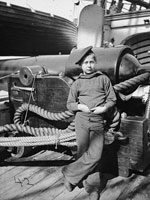

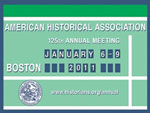

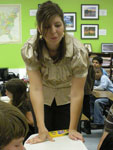
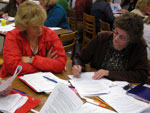
 Maybe you have a presidential library and museum nearby, providing educators with workshops on using archival resources. Or a local university that offers professional development courses for teachers (such as the
Maybe you have a presidential library and museum nearby, providing educators with workshops on using archival resources. Or a local university that offers professional development courses for teachers (such as the